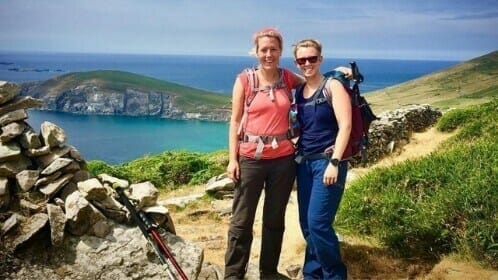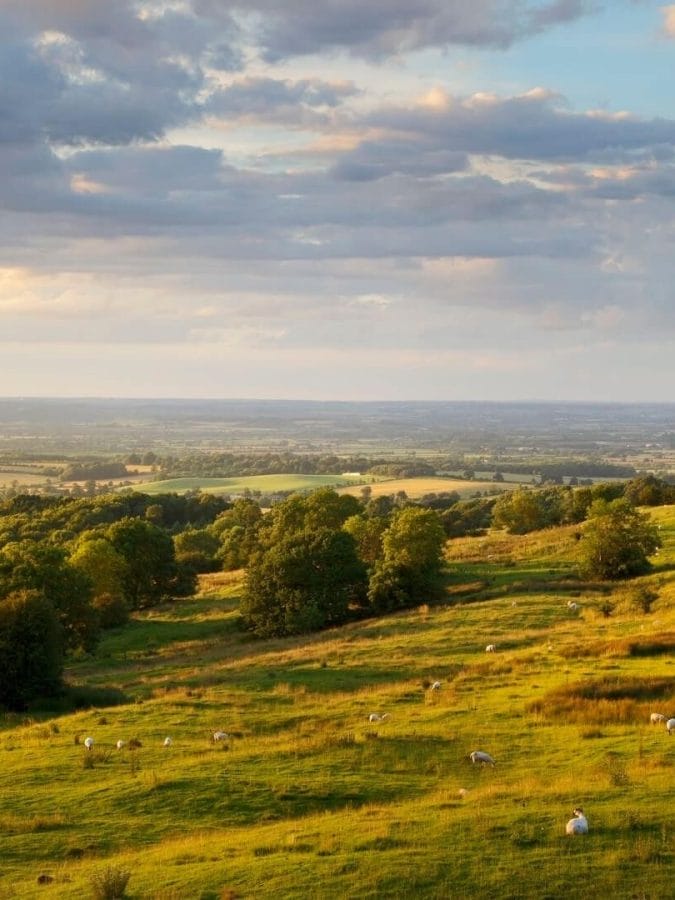We regularly hear the phrase “boots on the ground” in relation to the military, and it’s for a reason. While scruffy hikers and their brightly coloured packs may contrast starkly with the military’s crew cuts and drab camouflage, those who’ve spent time in the Army or Marines are particularly accustomed to spending a great deal of time pounding the ground with their own two feet. The well-known television personality Bear Grylls utilised his military experience to pass on survival training and skills to the rest of the world. As a former Army Officer, I’d like to convey a few hiking tips of my own relating specifically to how you can hack your way to a more comfortable and successful hiking adventure.
Pack light and pack smart
When you have to carry heavy radio batteries and extra boxes of rounds, you soon learn to pack light and pack well. First off, jettison all unnecessary packaging from your food and any other perishables. It’s a stark lesson in recycling once you realise how much both military rations and civilian hiking snacks are enveloped in far too much plastic and cardboard. It’s also of benefit to challenge the traditional wisdom on hiking packs. Mountaineers and trekkers almost always carry the typical tall, thin rucksacks. My collection does contain one of these from the New Zealand brand MacPac, and it’s brilliant in many scenarios.
Nonetheless, I still cannot shake my preference for an old Army pack with its roughly square shape and modular assembly. Instead of having only one large top-access compartment, it can be set up to contain anywhere from three to ten compartments, pouches and zippered sleeves. I always find the large, second main compartment with bottom and side access to be the perfect place to quickly roll up and store any damp overnighting gear such as tents, sleeping bags and bivvy bags. Plus the pack has an extra wide waist belt to take the load off your shoulders.
The use of multiple external pouches also makes for quicker and easier access. Traditional packs often see hikers rummaging around for ages trying to find something buried deep underneath piles of equipment. And of course the basics still apply when it comes to how you pack your bag: Heavier, rarely used items at the very bottom and pushed forwards near your spine. Keep regularly needed objects accessible in the pockets of your jacket or pants so you don’t need to remove your pack too often. You can even find backpacks with waist belts which have a small zip pocket or pouch on either side. Features like these make it much easier to “stow as you go,” as we used to say.

Modular backpack or alpine pack? – Photo credit www.nicholasgrundy.com
Pick up some Army-specific equipment
One of the most useful items post-Army has been a little something known by the acronym FRED. Officially it is the Field Ration Eating Device. It is known more colloquially in Australia as the Fairly Ridiculous Eating Device, with ‘fairly’ usually being interchanged with a certain expletive. Use your imagination here. Anyway, it’s a small, rectangular bar of metal about the size of your pinky finger, and it is the world’s smallest can opener. The Australian version is a vast improvement on the original US Army P-38 and P-51 devices. The difference? The version from down under is elongated to include a spoon at one end. Design perfection. Another difference is that the US versions were only in service from World War 2 until shortly after the Vietnam War, whereas the Australian FRED – as far as I’m aware – is still used today.
Another piece of kit phased out of the US Army (thanks to MREs, or ‘Meals Ready to Eat’) and still present in Australia is the kidney cup. This steel cup has a cross-section shaped like its namesake organ such that it fits snugly around a standard issue green plastic water bottle. As such it takes up virtually no additional space and can be used to boil water or heat food over a stove thanks to its collapsible handle. In order to light said stove we used special matches which were both wind- and waterproof. The unique coating extends more than halfway along a normal match stick and continues to burn even when held under water! Finally, for all of you stargazing hikers out there I recommend acquiring a head torch which has either a red filter or a dimmable red LED option. This was useful for remaining better concealed than when using bright white LEDs, but equally as important is the fact that the red light will not completely wreck your eyes’ acclimation to seeing in the dark.

Field Ration Eating Device – Photo credit www.nicholasgrundy.com

Kidney Cup and Water Bottle – Photo credit www.nicholasgrundy.com
Look after your equipment
The importance of looking after your own gear was ground into us on a daily basis. Allowing rust to form on weapons is deemed an offence, so you clean and oil them multiple times each day. Away from that world I now take pride in looking after my own hiking gear and my camera equipment as a professional photographer. Keeping zips, boots, pack straps and tents cleaned and serviceable doesn’t just make for ease of use now, it saves you hassle and money in the long-run by increasing their overall lifespan. And when it comes to your own personal jewellery or watches, you should protect these from scuffs and scratches if on a more arduous hike among rockier and steeper terrain. Wedding rings can be covered in duct tape, or removed and clipped inside a pack or placed on a necklace. Watches can be covered with a cut up sock which will absorb most bumps and scrapes. Simply cut a couple of inches off the top of an old hiking sock and the elastic will hold it tight over the watch like a wristband. We used these to maintain camouflage by preventing the sun from glinting off the glass. The homemade sleeve can be readily peeled back to check the time.
Bring spares and make repairs
Looking after your equipment also means making your own repairs. I find that those plastic buckles on pack straps break more often than you’d like to think. The main clip on my camera bag breaks at least once every year or two. It’s useful to bring a couple spare plastic clips in case one snaps on an important pack compartment. You can find these for pennies online, plus look for super strong fabric-embedded duct tape while you’re at it. It’s easy to tear off in strips and doesn’t stretch out like electrical tape. It can be used to fix just about anything – from boots to tents. Bring spare cord as well which can be used as emergency boot laces. The eyelets on certain brands of boots chew through laces far too quickly if you ask me. Pack a sewing kit and a few spare buttons to keep your clothing in check as well. Once you start fixing your own gear you’ll quickly become more and more resourceful when out and about. Such proficiency at making your own repairs likewise comes in handy for long distance cycling tours too.
Re-think conventions surrounding footwear
Calf-high boots are synonymous with the military. Unfortunately, like many items of standard issue equipment, this doesn’t mean they are the best solution. Yes, both military and hiking boots offer superior ankle support, warmth and overall protection. Yes, they are more readily waterproofed. However, boots are not necessary in all circumstances, sometimes proving overkill on certain trails. In summer they can become stiflingly hot on your feet, raising your overall body temperature once you get moving. Another old Army saying, which has quite a bit of truth to it, is that one pound on your feet equals five pounds on your back. As such, now free from the requirement to don boots all the time, I much prefer to choose other footwear.
For example, when hiking a fairly flat trail such as the Antrim Glens / Coastline Hike in Northern Ireland, and when tackling a hike like Spain’s Camino Frances during the summer, I rarely bring any boots at all. In such conditions and climates the moderately experienced hiker can easily get away with lightweight below-ankle boots, trail runners or even plain old sneakers. In fact, wearing smaller trail and running shoes provides the benefit of having a smaller footprint. Although counter-intuitive to many, this can often be substantially better when hiking and climbing up steeper and rockier terrain. There’s a reason why rock climbers wear shoes comparable in size to those donned by ballerinas.
During time off from the Army I managed to ascend the highest peaks in Slovenia and Malaysia – crags soaring to 3,000 and 4,000 metres – wearing nothing but Adidas jogging shoes and trail runners. And no ankles were sprained or twisted in the process. In recent years there has been a good deal of controversy in the Irish hiking community surrounding climbers summiting Carrantuohill (Ireland’s highest peak) in nothing but sneakers. Criticism has been hurled in the direction of these so-called ‘novices,’ however the opposite may in fact be true, with these hikers in fact being expert climbers. At only a little over 1,000 metres, a summer ascent of Carrantuohill hardly requires tall boots and crampons.

Wearing sneakers instead of boots – Photo credit www.nicholasgrundy.com
Foot care, Army-style
I saw some pretty messed-up feet in my time. The packs of overburdened troops press their feet ever harder into the ground, causing some fairly horrendous blisters. Then you have those who leave their boots on for days without removing them at all. Understandable when you must sleep with them on in case you need to leap into action. To break it down simply: Air your feet out during rest stops. Wash your socks as best you can and tie them to your pack to dry them while moving. Break in new boots beforehand. Use whatever works for you personally for alleviating and preventing blisters, be it moleskin, corn pads, medical tape, duct tape, two pairs of socks, wool socks or petroleum jelly.
Drink water, especially in the cold
During summertime basic training we were incessantly bombarded with the phrases “hydrate or die” and “beat the heat.” However, I’ve seen plenty of cases of colleagues forgetting to drink water when there’s snow on the ground. People tend to rug up and wear far too many layers before starting to walk once the temperature drops. As a result, even when it’s freezing you can end up overheating, perspiring far too much, and inevitably end up dehydrated. So, before heading off, strip down to one or two less layers than you’re comfortable with at a standstill. And of course, stay hydrated and always bring a little more water than you think you need.

Kidney Cup and Stove – Photo credit www.nicholasgrundy.com
Plan before you hike
Another old saying drummed into us during officer training was the six P’s, or “Prior Planning Prevents Pretty Poor Performance,” with the Australian Army replacing the “pretty” with a certain crude word. When undertaking a multi-day hike in Europe it’s crucial you plan your route, your pace per day, overnight and resupply locations. You can take a leaf out of the Military Appreciation Process (MAP) as well and prepare for likely eventualities along the way. A simple and common sense example of this involves thinking about what layers of clothing to pack based on the climate and season. Fortunately you can leave virtually all of the planning and preparation phase to the experts at a package tour operator such as Hillwalk Tours. These organisations give you the freedom to embark on pre-planned, self-guided hikes where you’re already covered with route maps, trail notes, overnight accommodation in cozy BnBs, and even pre-packed lunches each day.
Stay comfortable
Last but certainly not least, make sure you keep comfortable while hiking through nature. Although we may appear to enjoy roughing it in the Army, we’re all still human at the end of the day and we do like our creature comforts too. I personally never enjoyed being miserably cold and wet, so I always made sure to have additional dry neck warmers, gloves, beanies and so on. I also needed something to spice up the combat ration packs, and when the Australian Army stopped including miniature bottles of Tabasco sauce with these I was momentarily devastated.
These days the military is well known for its widespread love of coffee, and this was equally true more than ten years ago. Many colleagues of mine invested in non-issued hiking stoves, such as the now famous JetBoil which will almost instantaneously boil water for your caffeine fix. I’ve even seen soldiers and officers bring a French coffee press and folding stools out field. When the ground is saturated or covered in a layer of frost, sometimes all you want to do is sit on something resembling a normal chair. As Mr. Burns said in an episode of the Simpsons, “Oh, yes, sitting. The great leveler. From the mightiest Pharaoh to the lowliest peasant, who doesn’t enjoy a good sit?” Even if you’re hiking through the wilderness as a proper escape from the corporate rat race or to get away from the urban jungle and have a digital detox, it’s important psychologically to bring a modern convenience from home.
Hopefully there’s a few tips in there to improve your next hiking journey. If you’re looking for more still, this list will be continued with nine more tips in part two of this post next month, so keep an eye out on the blog! And if you need any help planning your next hiking holiday, check out our main site: www.hillwalktours.com
We hope that you enjoyed this guide to 9 Hiking Tips for Challenging Hikes from a Former Army Officer. For more hiking tips, check out more posts on the Hiking Walking Blog.


